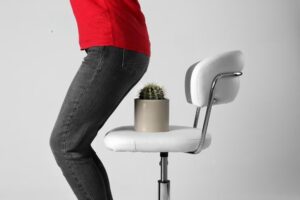What is Piles/Hemorrhoids?
Hemorrhoids, also known as hemorrhoids, are a common condition of the anorectal region, which occur as a result of enlargement and displacement of the normal anal cushions. Worldwide, the prevalence of piles is estimated at 4.4% in the general population. Hemorrhoids can make daily activities, such as biking, exercising or even sitting for long periods of time, very uncomfortable and hard to live with.
Why Do Piles Occur?
Hemorrhoids are the abnormal downward displacement of the anal cushions causing venous dilatation. They are largely caused by several risk factors as follows:
- Constipation and Prolonged Straining: Hard stool consistency and increased pressure over the abdomen could cause obstruction of blood flow, resulting in congestion of the veins of the hemorrhoidal plexus. Passing of hard stool material increases shearing force on the anal cushions.
- Diarrhea: Diarrhea often contains bile or gastric acid, which can irritate the rectum, causing hemorrhoids to flare up. The prolonged and repeated straining and sitting down associated with diarrhea also contribute to the formation of piles.
- Pregnancy: Women are more likely to develop piles during pregnancy and after childbirth due to the pressure on the pelvic area and hormonal changes. Women who have delivered more than one baby are also more prone to develop piles. Pregnancy can predispose to clogging of the anal cushion and symptomatic hemorrhoids, which resolves spontaneously soon after childbirth.
- Diet: Many dietary factors including low fiber diet, spicy foods, and alcohol intake predispose piles.
- Sitting for Long Periods: Prolonged sitting puts pressure on the veins in and around the anus and rectum, increasing the risk of piles.
- Obesity: Increased intra-abdominal pressure in obese individuals with high body fat and abdominal fat is thought to provoke venous congestion of end part of the rectum and, thus, contribute to the development of piles.
- Regular Lifting of Heavy Weights: During the initial days, they have the tendency to hold their breath and strain as they lift weights. This puts excessive pressure on the internal organs including the veins near the rectum and anus, which in turn could develop into piles.
- External Trauma: Repeated trauma such as riding a motorcycle or a bike can cause a clot to form in the external blood vessels. Piles also occur sometimes after long car trips. This is the reason why truck drivers are at more risk of developing piles.
- Aging: Incidence and severity of piles increase with age. People over the age of 50 develop piles most often. That’s because the tissues that support the veins around the rectum and anus can weaken and stretch with aging.
- In Females: Women are prone to develop piles due to their menstrual cycle. The hormonal changes during menstruation can cause the blood vessels in the pelvic area to expand, leading to piles.

Signs and Symptoms
Based on the location, piles can be internal or external. Internal hemorrhoids develop inside the rectum and are not visible to the naked eye. External hemorrhoids often are noticed near the anal opening.
Internal Piles
Bright red bleeding is the most commonly reported symptom which coats the stools at the end of passing motions and is painless. A sensation of tissue prolapse may be accompanied by mucus discharge, a sensation of fullness around the anal region, irritation of perianal skin, and occasional pain.
External Piles
They are often associated with a painful mass around the anus that is sore when touched. This mass may initially increase in size and severity over time. Bleeding can also occur if there is any formation of wound over the pile mass. Bleeding in this condition tends to be darker and more clotted than bleeding from internal piles.
- Bleeding Piles: Bleeding piles are a common symptom of piles. The bleeding occurs due to the rupture of the swollen veins in the anus or rectum. This can happen during bowel movements, causing bright red blood to appear in the stool.
- Prevention and Management of Piles: Preventing piles involves maintaining good bowel habits, including drinking plenty of water, eating a high-fibre diet, and avoiding straining during bowel movements. It is also essential to exercise regularly, avoid prolonged sitting, and maintain a healthy weight.
If you have piles, the symptoms can be managed through oral medications, warm baths, and ice packs. However, for severe cases, surgery may be required.
At AvurVAID Hospitals, we offer effective Ayurvedic treatments for piles that are safe, natural, and non-invasive. Our treatments focus on balancing the Doshas in the body and improving digestion and absorption to prevent the recurrence of piles. Our experienced Ayurvedic doctors provide personalized treatment plans based on your unique needs, ensuring a speedy and long-lasting recovery.






